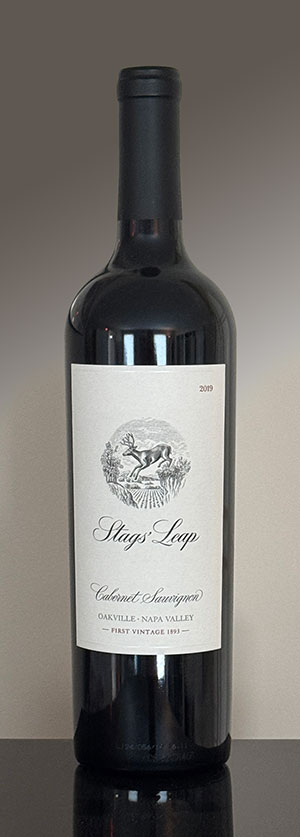Stags’ Leap Cabernet Sauvignon 2019

Let’s be clear up front: this is a post about the Stags’ Leap winery in Napa, California, not the Stag’s Leap Winery in Napa, California. Whaaaat?
See that little apostrophe? Stag‘s Leap is the famous producer that shocked the wine world when they won the 1976 Judgement of Paris for their Cabernet Sauvignon. Stags‘ Leap is less well known, but considerably older. The similarity has caused confusion for decades, and it even led to a famous lawsuit.*
The Stags’ Leap estate was first worked when grapes were planted in 1872 by the “Grigsby family,” about whom there are no surviving details. 13 years later, the land was sold to W.W. Thompson and H.H. Harris. The next year, Harris conveyed his interest in the property to Thompson’s nephew, Horace Blanchard Chase. In 1893 Chase established a winery there. By the late 1890s it was producing wine commercially and became known for its picturesque setting.
The estate was purchased by Clarence and Frances Grange in 1913, who were prominent members of San Francisco society. The Granges wanted to have a country home in Napa so that they could entertain their socialite friends. The Granges occupied the Manor House until 1956. Although they did not make wine, the vineyards remained in production.
